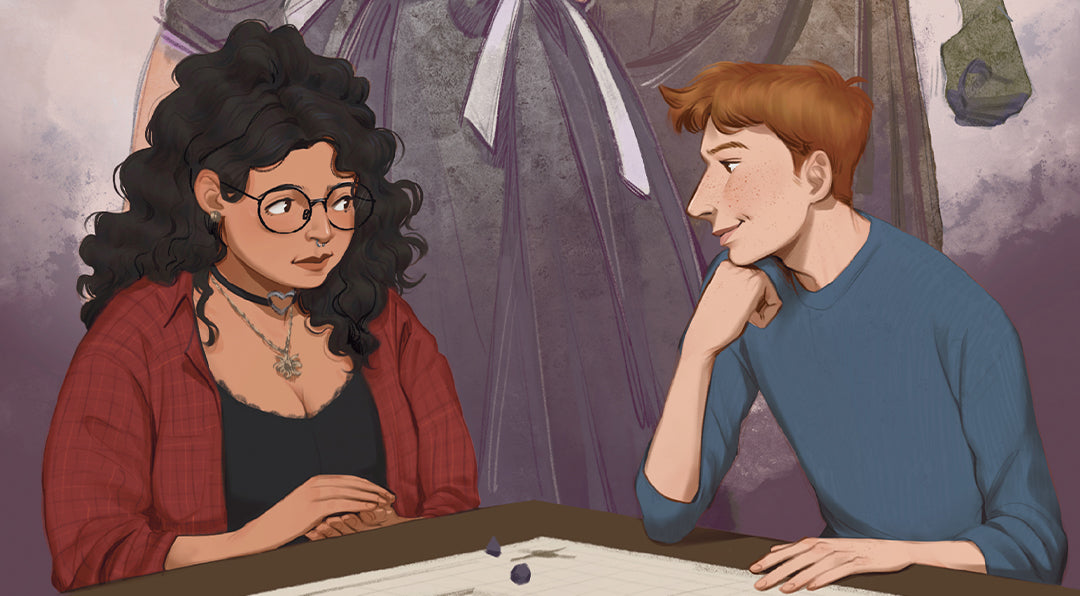
Who We Are in Game: Exploring Identity through Table-Top Role-Playing Games

Alright, so naming a Dungeons & Dragons (D&D) character after yourself might be a bit obvious. Aside from the name, and the fact that she’s a magic-wielding tiefling, though, everything else about Moth (my favourite player character or PC) is true, both in game and in real life (IRL). I’ve played a pantheon of adventurers — from human rangers to elven rogues to soldiers, smugglers, nobles, vampires and everything in between — and not once have I been anyone but myself.
I can almost hear the players who find respite in table-top role-playing games (TTRPGs), the ones who use the medium as a way of disassociating from reality, crying protests. “That’s a lie!” they shout. “My PC is nothing like me! This is where I escape my boring life!”
Honestly, same, but consider for a moment that every player, despite their motivation for creating a character, remains a real person IRL, playing a game. We bring our lived experiences to the gaming table and that’s where the magic happens. This unique, make-believe blending of reality and fantasy, wrapped in suspending disbelief and facilitated by playing with our friends, creates a space where we have the freedom to explore our identities. Even the characters we make to escape reality reveal something about our real-world needs.
For example, I once made a half-orc fighter, which at the time I thought was so antithetical to my typical play style. I tend to play charismatic magic users, but wanted to challenge myself as a player, so I made Ursula. Ursula was crude and loud and thirsty (in all the ways); she was unapologetic about both her skill as a fighter and her tall, powerful body. Keeping in mind that I purposefully made this character to avoid playing someone too similar to myself, I now laugh. I mean, come on — IRL, I’m a six-foot-tall redhead wearing size sixteen jeans.
In a lot of ways, Ursula reveals more of me than any of my other PCs because she reflects the parts of myself with which I struggle. At the same time, playing a half-orc allowed me to practice acceptance and rehearse confidence in game. You can guess how these skills replicated in my own life afterwards. I won’t claim that I don’t struggle with my size anymore, but Ursula inspires me to resist shrinking myself, literally and figuratively.
In my work as a counsellor, we might see the similarities between this exploration of identity and an internal family systems (IFS) approach to therapeutic play. People pay big money to do what TTRPGs do by unintended design. Briefly, IFS is a therapeutic approach developed by Dr. Richard C. Schwartz that takes a systemic approach to understanding the “parts” of a person. I’m not suggesting that game masters (GMs) moonlight as undercover therapists but rather that TTRPGs lend themselves to the introspective exploration of identity, like that practiced by counsellors and therapists, and that the gamification of this process makes introspection accessible for a wide audience of players.
A few years ago, I had the opportunity to hear Canadian counsellor, scientist and storyteller, Deborah MacNamara, speak on therapeutic play. I remember three specific points she shared during her lecture. First, that people need Play — capital “P.” As in, people need to imagine and laugh and create and have fun. Second, that our brains take a break and suspend reality as we engage in Play (hello escapism, my friend). And third, that because of this suspended reality, our brains are allowed to feel safe while we Play. I will never forget how she said, “You are safe when at Play.”
Safe to admit your jean size and embrace your height. Safe to reveal your failed violin ambitions. Safe enough, even, to question your sexuality.
Given the safety created by the act of playing, TTRPGs function as a systemic framework in which players have the unique opportunity to address parts of themselves. With the right people around that table — namely friends who both respect boundaries and encourage personal growth, while also having fun — self-exploration while playing D&D or any other TTRPG becomes a nurturing, potentially healing benefit of the game.
As the characters in my novel learn, Who We Are in Real Life might just begin with who we are in game. Play on, adventurers!
